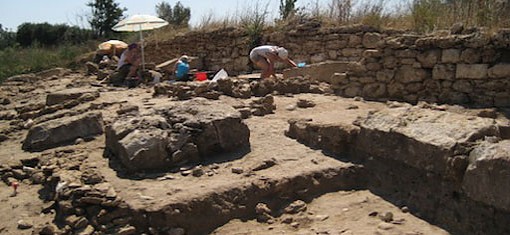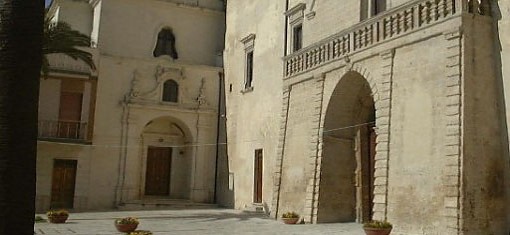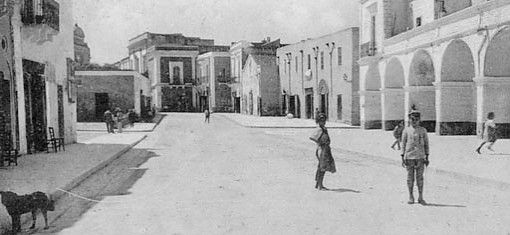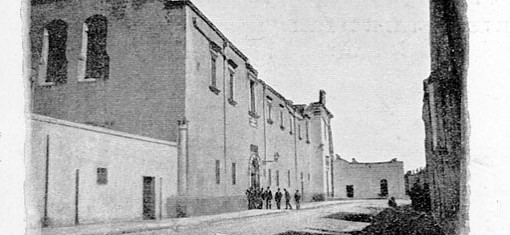Historical notes about Muro Tenente
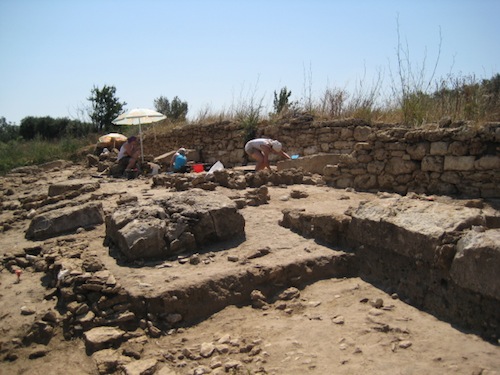 Historical notes about Muro Tenente
Historical notes about Muro Tenente
Muro Tenente was a fortified, Messapico (of the Messapica civilization) site, of medium dimensions as it was usual to find in Salento during the period before the Roman colonization (from the Iron Age to the IV, III century B. C.). Its origins are similar to the other sites located in the rest of our Puglia “According to the evidences reported by the most important ancient historians, all the populations living in Puglia, from the far Salento to the Gargano, were Iapigi, although they were divided into three groups: Messapi, Peucezi and Dauni, moving from the south to the north of the region. Even modern historians agree with this theory. There were also other names used to refer to particular groups of Iapigi: the Peucezi, living in the central part of Puglia, were called Pediculi. In Salento, so called from the Greek name Messapia, which means the land in the middle, between the two seas, there were the Calabri, word used by the Tarantini (citizens of Taranto) for the native populations located close to the borders of their territories. Finally, near the southern part of the peninsula there were the Sallentini”. (E. M. De Juliis, Gli Iapigi, Milano 1988, p.14). At the present time, it is not a very common belief to affirm that Iapigia indicated only the southern part of Puglia.
The origin of Iapigi who mixed with the native populations is legendary. According to tradition they “were probably Cretan who, coming back after the siege of Camico, in Sicily, where they were looking for their King Minos, were thrown onto the costs of Iapigia because of a storm. Here they sttled permanently and founded the town of Iria, and became Iapigi Messapi”, (but a few historians believe that their origins go back to a “mixed group of Cretan and Athens” or only to “Athenians characteristics”) . According to another tradition, they had Illyrian ancestry. They arrived in Puglia around the XII, XI century B.C.) (See also E. M. De Juliis, Salento Porta D’Italia, Galatina, 1989, p.75-77)
According to F. D’Andria, then, just as nowadays “there were lots of boat-people who approached the costs of Puglia. They were people on board of “cart of the sea” coming from anywhere, especially from the Balkans”). (G. Annibaldis, Intervista a F. D’Andria in La Gazzetta del Mezzogiorno, September 2000, p.27). Around Muro Tenente there was a mixture of populations too. Historians know very little, however, because of the very few remains found in this territory belonging to the Mesolithic, Neolithic and Bronze Age. With the Iron Age a few huts appeared; their number increased so much that, from the expansion of 7.413 acres (from the centre of the site), they covered about 123.500 acres during the Hellenic age, the greatest flourishing period. In fact, the history of the Messapica civilization and of Muro Tenente changes when the relations (and hard tensions) with the Greeks become stronger.
At about the end of the VIII century B.C., the Spartans found the colony of Taranto, “during the following centuries, it will lead to a coexistence and, of course, to an integration of two different cultures (the Greek and the Messapica). Those relations not only mean an exchange of goods and objects, but of ideas, cultures and technologies too. (D.Yntema, Le ricerche dell’équipe olandese di Amsterdam nell’area brindisina, in Muro Tenete Centro Messapico nel Territorio di Mesagne, 1999, p.21). The alphabet is Greek, with a few messapiche letters added; the plans of the houses, the streets and the pottery are influenced by a Greek style, even though the Sallentini characteristics are always strongly visible. During the years 1981-1993, the Archeology Commision of Puglia conducted the excavations in Muro Tenete, revealing precious and useful information to the studying of the Messapi civilization: graves, streets, furnaces of the Hellenic period and foundations of houses, of the IV century B. C.
Also the excavations led by the Libera Università of Amsterdam during the years 1992-2002, reveal fragments of Hellenic houses (IV-III B.C.) “where there were found structures of buildings placed side by side, with gardens at the back, ranged along the 4 metres streets, probably built on regular axes “. (G. Andreassi, Muro Tenete in Studi Etruschi, XLIX, p.464-465, 1981; F. D’Andria, La casa in Messapia in F. D’Andria, K. Mannino (ed), Ricerche sulla casa in Magna Grecia e in Sicilia, Atti del Colloquio – Lecce, 23-24 giugno 1992, Galatina 1996, p.411).
The fortifications of Muro Tenente go back to the Greek period too. They were just the walls (of 2675 metres) “ to give the name to the whole town from the middle age onwards, called Parentone/Paretalto and Muro Tenente”. (J. Boersma, G. J. Burgers, Fortificazioni messapiche nel brindisino, in Scritti di Antichità in memoria di Benita Sciarpa Bardaro, p.32).
With the Roman conquest of Taranto (272 B.C.) begins the “Romanization” of Salento through a series of military campaigns. “ In 244 B. C. the Romans installed in Brindisi (another messapica town) an allied population coming from the centre of Italy. From then on Brindisi became a Latin colony with the function of Roman base in Salento. After the romanization of Salento, for the Messapi, already under the Hellenic influence, it begins a second process of cultural integration began”. (J. Boersma, D. Yntema, Valesio, Fasano 1989, p.28).
The following years a slow decadence started in Muro Tenente, a contraction of the built-up area, until the entire abandonment of the site during the late-imperial period. “ So, we must assume that from the Roman period and especially during the Imperial one, there was no further spatial organization of the urban model: the old town of Muro Tenente did not exist anymore”. (G. J. Burgers, Le ricerche a tappeto: un esempio di urban survey, in Muro Tenente Centro Messapico nel Territorio di Mesagne, Mesagne, 1999, p.49).

